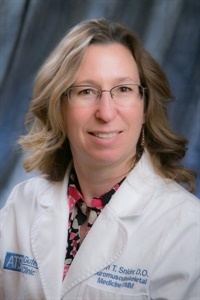Total Credits: 3.25 including 3.25 AMA PRA Category 1 Credit(s)™, 3.25 AOA Category 1-A Credit(s), 3.25 AOBNMM Specialty Credit(s)
This program will expire and must be completed by 10/03/28.
This presentation is designed for practitioners eager to deepen their understanding of cranial osteopathy. Participants will learn about cranial structure’s anatomical and physiological aspects, alongside the fundamental techniques used in cranial treatment. Emphasis is placed on enhancing palpation skills and understanding the principles of osteopathic manipulation as they pertain to cranial treatment.
Objectives
By the end of the presentation, the learner will be able to:
• Discuss the clinical applicability of osteopathic cranial manipulative medicine.
• Describe the motion of midline and paired cranial bones during inhalation and exhalation of the primary respiratory mechanism.
• Describe motion and axes of rotation of the sphenoid and occiput in each of the primary sphenobasilar symphysis strain patterns.
• Describe and demonstrate the steps of the covered osteopathic cranial manipulative technique.
Accreditation Statements:
The Missouri Association of Osteopathic Physicians and Surgeons (MAOPS) is accredited by the American Osteopathic Association to provide osteopathic continuing medical education for physicians. MAOPS designates this program for a maximum of 3.25 AOA Category 1-A credit(s) and will report CME and specialty credits commensurate with the extent of the physician's participation.
This activity has been planned and implemented in accordance with the accreditation requirements and policies of the Accreditation Council for Continuing Medical Education (ACCME) through the joint providership of the Missouri Association of Osteopathic Physicians and Surgeons (MAOPS) and the National Center for Osteopathic Principles in Education (NCOPPE). MAOPS is accredited by the ACCME to provide continuing medical education for physicians. MAOPS designates this live activity for a maximum of 3.25 AMA PRA Category 1 Credit(s)™. Physicians should claim only the credit commensurate with the extent of their participation in the activity.
Planning Disclosure:
The Continuing Education Steering Committee (CESC) and Osteopathic Principles and Practice (OPP) Committee members and planners/reviewers of this activity have no relevant financial relationships with any organization producing, marketing, reselling, distributing health care goods or services consumed by, or used on, patients relative to the content of this presentation.
Osteopathic Grievance Policy:
All grievances should be in writing and should specify the nature of the grievance. Initially, all grievances should be directed to the MAOPS Executive Director, who will then forward said grievance to the Education & Convention Committee. All grievances will receive an initial response in writing within 30 days of receipt. If the participant does not receive a satisfactory response, they can submit a complaint in writing to the Council on Continuing Medical Education of the AOA at 142 East Ontario Street, Chicago, IL 60611.
| Introduction to the Cranial Principle - Handout #1 (9.2 MB) | 184 Pages | Available after Purchase |
| Introduction to the Cranial Principle - Handout #2 (4.4 MB) | 56 Pages | Available after Purchase |

Eric Snider, DO, is an associate professor at A.T. Still University’s Kirksville College of Osteopathic Medicine (ATSU-KCOM). He serves as the Osteopathic Manipulative Medicine department chairperson and as the program director for the Osteopathic Neuromusculoskeletal Medicine (ONMM) residency. Dr. Snider is board certified in Neuromusculoskeletal Medicine & Osteopathic Manipulative Medicine. He earned his Doctor of Osteopathy from the West Virginia School of Osteopathic Medicine (1999), and completed his internship and residency at Northeast Regional Medical Center (1999-2002). Dr. Snider discloses that he has no relevant relationship with any organization producing, marketing, reselling, or distributing healthcare goods or services consumed by, or used on, patients relative to the content of this presentation.

Karen Snider, DO, FAAO, FNAOME, is a professor at A.T. Still University’s Kirksville College of Osteopathic Medicine (ATSU-KCOM). Dr. Snider is board certified in Neuromusculoskeletal Medicine and Osteopathic Manipulative Medicine. She earned her doctor of osteopathic medicine from West Virginia School of Osteopathic Medicine, and she completed her residency at Northeast Regional Medical Center. Dr. Snider has earned fellowship awards from the American Academy of Osteopathy and the National Academy of Osteopathic Medical Educators.
Dr. Snider discloses that she has no relevant relationship with any organization producing, marketing, reselling, or distributing health care goods or services consumed by, or used on, patients relative to the content of this presentation.
| 5 |
|
| 4 |
|
| 3 |
|
| 2 |
|
| 1 |
|